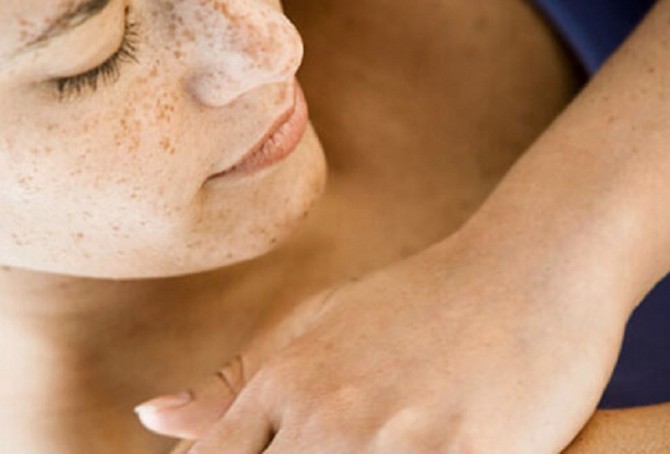Aging is associated with countless changes, spanning the full length from productivity to lifestyle to health. Physiological changes generally slowdown the elderly. As the overall efficiency of your cells decline, your body’s ability to repair damages and regenerate is also reduced.
Skin aging is to be expected, while certain skin conditions are more likely to develop than not. Perhaps significantly more alarming than treating sagging skin with a V-Zone Neck Cream, is receiving diagnosis for skin conditions that are generally chronic, lifelong, and which are frequently associated with other more serious health conditions.
Skin disorders among the elderly
Aging is the root cause of countless diseases and disorders often observed among older people. It can be complicated by diseases that may be systemic or that may involve the failure of specific organs to function optimally, such as compromised immune response, nutritional deficiencies, heart, liver and kidney diseases, allergies, and poor vein health. Causes may also be traced to exposure to extreme weather conditions, sunlight, and toxic chemicals. Stress can trigger skin disorders as well.
Listed below are some of the most common skin disorders among the elderly:
1. Seborrheic keratoses
These look like burned bumps of skin, often appearing grey, black or tan. These bumps usually appear in clumps and all over the body, and can be alarming. They may resemble how skin cancers appear but these are benign growths that rarely require any treatment or medication. However, affected skin patches may be removed if these become uncomfortable or, if these appear unsightly, causing trouble to self-esteem.
2. Cherry angiomas
These appear like red moles on the skin. Busted blood vessels make cherry angiomas appear red. These commonly show up on the skin of people 30 years and older. Cherry angiomas are not a symptom of any disease and its causes remain unknown but, these hardly raise the alarm nor should these be removed.
3. Telangiectasia
Telangiectasia appears like spider veins on the skin, frequently appearing around the nose, cheeks and chin. The underlying causes involve poor vein health. Often, this condition may also be congenital or hereditary. While this can cause unsightly marks on the face that are often harmless, sometimes, most especially when these are congenital, the dilated blood vessels may manifest on critical organs like the liver where it can cause major health problems.
Dry, cracked, scaly skin that resembles a cracked jar of porcelain is how this skin condition appears on skin. Thinning and significantly less oil production in the skin of the elderly generally make their skin more prone to this condition. In some cases, the cracks may burrow deep enough to cause bleeding on the skin.
Liberal application of emollient moisturizers and generally avoiding skincare products with harsh ingredients, including exfoliants, are some of the corrective and preventative measures. In more serious cases, however, medications which may include steroid can be a treatment option.
5. Pruritis
This is a skin condition that is accompanied by redness, swelling, inflammation and uncontrollable scratching and itching. This often manifests with Xerosis. It can also appear as a symptom of other diseases and infections affecting the body’s immune response, including diabetes, thyroid diseases, iron deficiency anemia, and HIV.
6. Erythroderma
Long-term, unprotected exposure to the sun may lead to more than just wrinkling skin that can be treated with a Rodan + Fields Redefine Acute Care. Erythroderma, also known as exfoliative dermatitis can cause shedding of 90% of the skin. In adults, this may be caused by aggravated cases of atopic dermatitis or other long-term skin conditions, but also acquired diseases and infections such as HIV, leukemia, and certain cancers.
7. Purpura
This condition, characterized by a combination of purplish, reddish and black bumps on the skin which may have more serious root causes involving the blood, veins, and nutrient deficiency. It is common among people with Vitamin C deficiency, as well as older people who have brittle veins prone to leaking and hemorrhage. Trauma and medications can also bring about Purpura.
8. Eczematous Dermatitis
Stress, distress, Parkinson’s disease and compromised immune response are just a handful of the factors that can lead to this group of skin conditions characterized by the appearance of various skin inflammations that may appear as swollen, reddish, blemished and even wounded skin.
Conclusion
Older adults have to be on the lookout for several skin conditions that may be triggered by other, more serious health conditions associated with aging. When these symptoms are spotted, early diagnosis may mean earlier treatment and aversion of a possible life-threatening disease.
Author Bio:
Addie Davison is a health and beauty consultant from New York, New Jersey, USA. She holds a bachelor’s degree in English literature. She likes to write about beauty, skin care, makeup… She is very passionate about writing. Her articles mainly focus on content quality and originality. She has self-promotion abilities and works independently on her own initiatives. Contact with her on Facebook, Twitter, Google+, Pinterest

